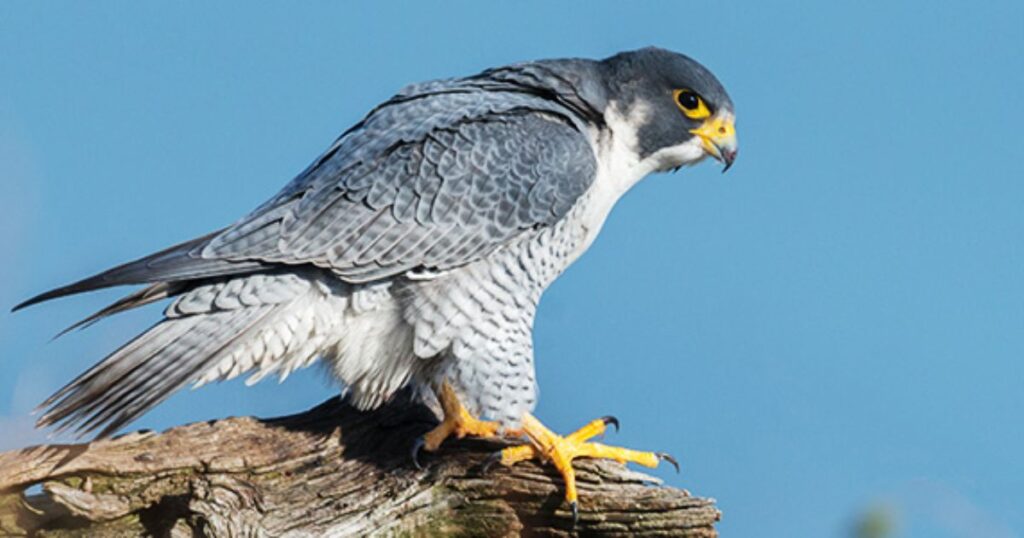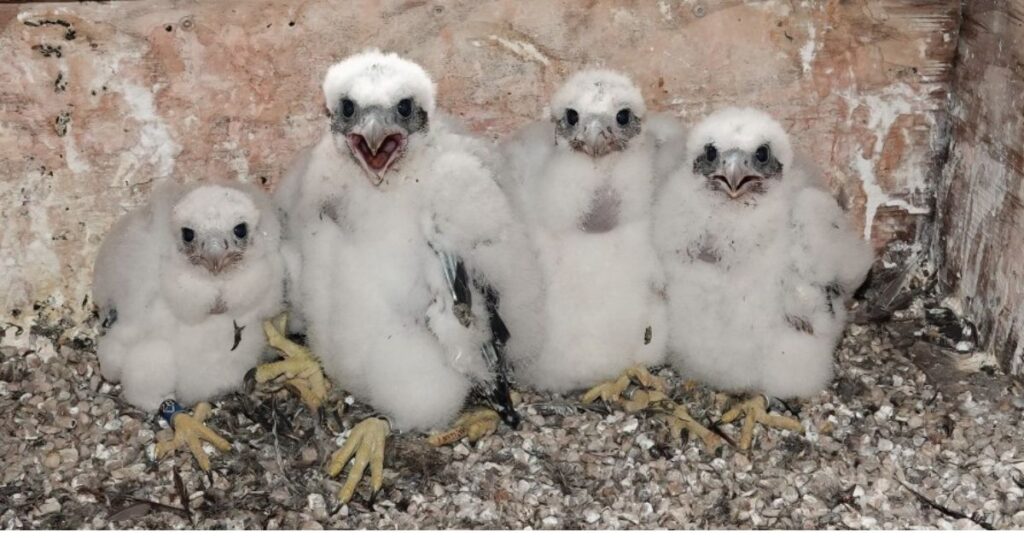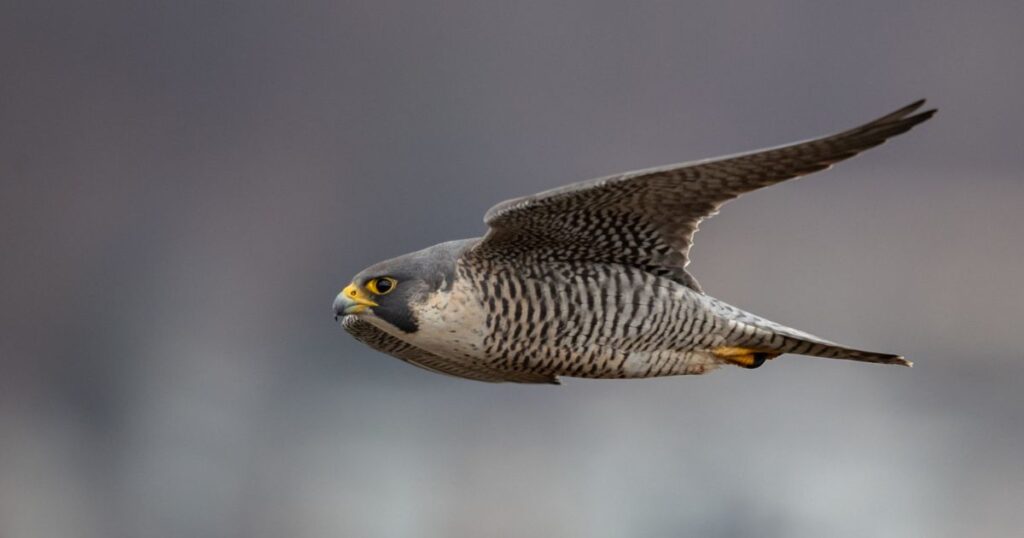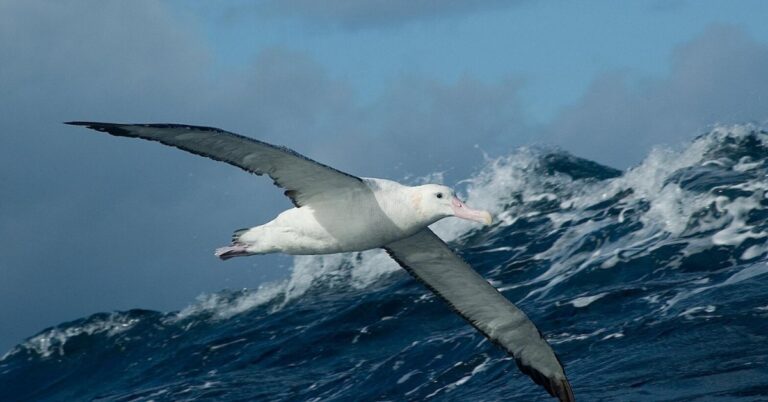Peregrine Falcon: Fastest Bird and Conservation Success
This is not the plot of an action movie but rather the daily life of the peregrine falcon, the fastest bird on our planet. With its remarkable ability to dive at over 240 miles per hour, this avian marvel has captivated nature enthusiasts and conservationists alike.
Yet, what stands out even more than its breathtaking speed is its incredible comeback story one that showcases human determination and dedication to preserving wildlife.
Some Special Characteristics
The Peregrine Falcon known for its breathtaking speed and unparalleled hunting prowess, this remarkable bird embodies both grace and ferocity in the skies. As it soars to dizzying heights before diving toward its prey at speeds exceeding 240 miles per hour, the Peregrine Falcon is not only a symbol of power but also an enigmatic marvel of nature’s design.
Beyond its impressive physical capabilities, this bird boasts a unique set of characteristics that enhance its adaptability and survival in diverse environments. From their striking plumage that provides both camouflage and beauty to their complex social behaviors during breeding season.
Habitat and Distribution
Peregrine with through the air at breathtaking speeds, this remarkable bird is not only a testament to nature’s design but also a master of adaptability.
Found across diverse habitats from rugged mountains and urban skylines to coastal cliffs this raptor’s global distribution underscores its extraordinary resilience and versatility. As we delve into some special characteristics that set the peregrine apart from its feathered counterparts.
Behavior
In the realm of avian wonders, few creatures captivate our imagination quite like the peregrine . With its sleek silhouette slicing through the sky at breathtaking speeds, this bird is not just a master of flight but also a fascinating study in behavior that has intrigued ornithologists and nature enthusiasts alike for centuries.

The peregrine remarkable adaptations, from its exceptional hunting techniques to its intricate courtship rituals, reveal a world where instinct meets agility in an extraordinary dance of survival.
Diet
With keen eyesight that can spot prey from miles away, these raptors have earned their title as the fastest creatures on Earth, diving at peregrine speed that leave even the most skilled human athletes in awe.
From city pigeons to coastal birds, peregrine exhibit remarkable adaptability when it comes to their menu choices. Their dietary habits reveal much about their role in ecosystems both ancient and modern and showcase their versatility as opportunistic hunters.
Reproduction
As these powerful predators soar through the sky, their reproductive journey unfolds high above cliffs and skyscrapers alike, where they engage in aerial displays that seem almost choreographed. But what makes their reproduction so fascinating isn’t merely their stunning acrobatics; it’s the elaborate bonding process and parental commitment that follow.

From selecting the perfect nesting site to sharing responsibilities in feeding and rearing their young, these majestic birds exhibit behaviors that underscore both teamwork and dedication.
Predators and Threats
The Peregrine embodies a unique blend of physical prowess, keen intelligence, and adaptability that makes it a formidable predator in various environments. With striking plumage that camouflages seamlessly against rocky terrains and industrial backdrops alike, these raptors have adapted to thrive despite numerous threats from both nature and human encroachment.

As we delve into some special characteristics of the Peregrine, we’ll uncover what sets it apart not just as an apex predator but also as an emblem of resilience against changing ecosystems.
Conservation Status
But what exactly sets this remarkable bird apart? Beyond its record-breaking diving speeds that can exceed 240 miles per hour, the Peregrine exhibits a suite of unique characteristics that make it an extraordinary predator.

From its distinctive markings to its unparalleled hunting techniques, each feature contributes to its status as one of nature’s most efficient hunters.
Evolutionary History
From ancient ancestors that glided through prehistoric skies to modern adaptations that have allowed them to thrive in urban environments, the Peregrine stands as a testament to nature’s ingenuity.
Its unique physical characteristics and behaviors not only enhance its survival but also reflect a fascinating evolutionary journey marked by resilience and innovation.
Relationship with Humans
Picture this: a creature that can dive at over 240 miles per hour, making it the fastest animal on Earth, yet possesses an elegance that captivates birdwatchers and conservationists alike.
As we delve into the special characteristics of these magnificent raptors, we’ll uncover how their remarkable adaptations have allowed them to thrive alongside humanity and in some cases, even within our urban jungles.
Interesting Facts
- The fastest animal on Earth: Peregrines can reach over 240 mph (386 km/h) in a hunting dive.
- Superb vision: They can spot prey over a mile away and have four times the visual acuity of humans.
- Global distribution: Peregrine falcons are found in nearly every environment, from tundras to urban skyscrapers.
- Mimicking natural cliffs: Tall buildings and bridges in cities have replaced traditional nesting sites, helping them thrive in urban areas.
And Also Read The Quetzal: A Majestic Bird of the Cloud Forests
Conclusion
The Peregrine Falcon stands as a remarkable symbol of nature’s resilience and the power of dedicated conservation efforts. Their incredible speed and agility not only captivate birdwatchers and nature enthusiasts but also remind us of the delicate balance within our ecosystems. As we continue to safeguard their habitats and promote sustainable practices, the story of this bird inspires hope for other species facing similar challenges.
FAQs
What Is Another Name For The Peregrine Falcon?
The peregrine falcon is also commonly known as the duck hawk, particularly in North America. The term “peregrine” itself derives from the Latin word peregrines, meaning wanderer or traveler, which is fitting given the bird’s extensive migratory habits.
How Fast Can a Peregrine Falcon Fly?
The peregrine falcon during its hunting stoop, or high-speed dive, it can reach speeds of over 240 miles per hour (386 kilometers per hour).
How Many Eggs Do Peregrine Falcons Lay?
Peregrine falcons typically lay between 3 to 5 eggs per breeding season, although clutches can occasionally range from 1 to 6 eggs. The female usually lays the eggs over a period of several days, and she will incubate them for about 29 to 32 days before they hatch.
Are Peregrine Falcons Endangered?
Peregrine falcons were once considered endangered due to drastic population declines caused by habitat loss, pesticide use (particularly DDT), and hunting.







